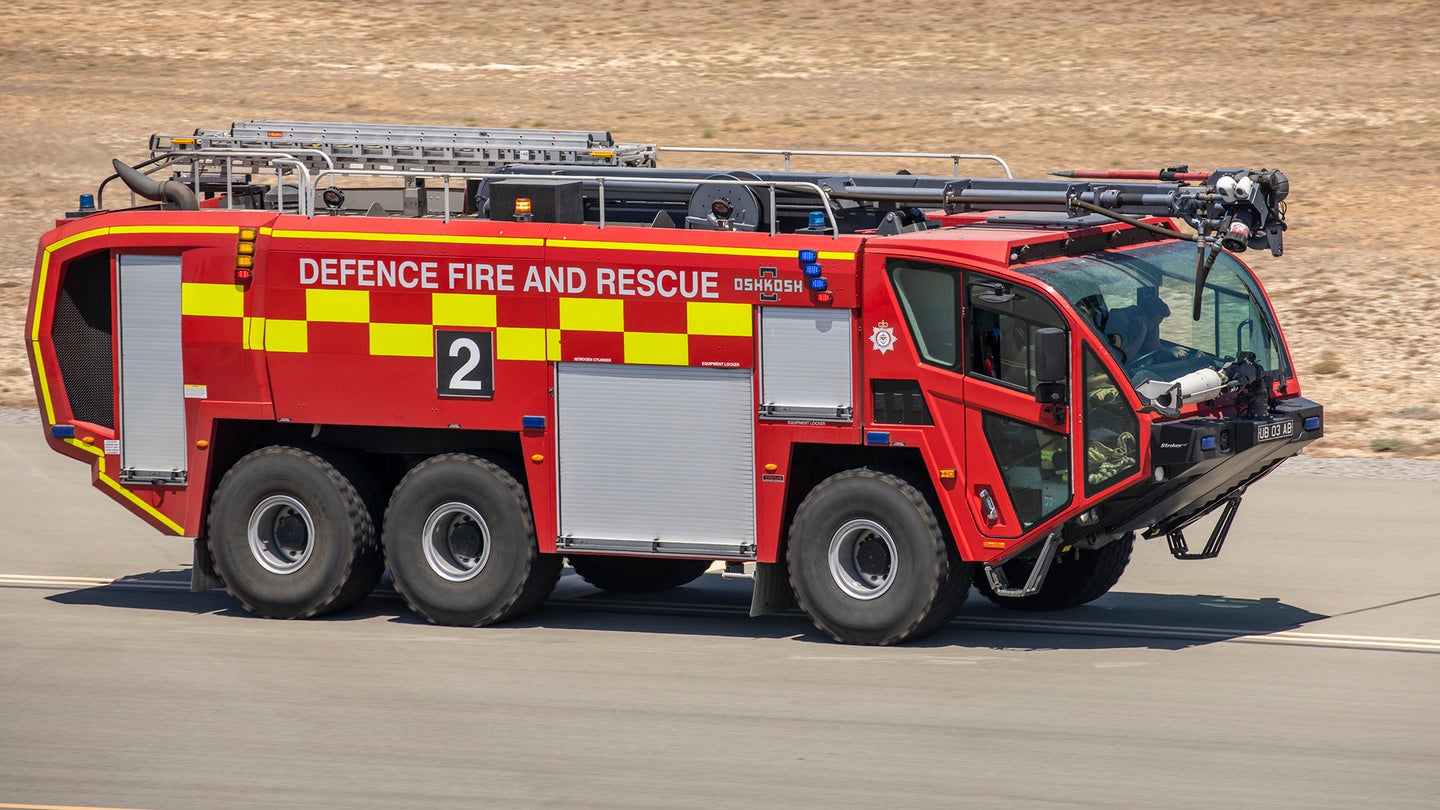
There are two kinds of fire fights in war. There’s an exchange of gunfire, where the fighting is done with firearms, and then there’s literal firefighting, where first responders and whoever else is on hand work to put out active flames caused by weapons. As Russia continues its war against Ukraine with missile attacks deep into the country’s interior, rapidly putting out fires is not just emergency response work, it’s part of the war effort. Earlier this month, the United Kingdom’s Ministry of Defence announced that the country would provide 17 special firefighting vehicles to Ukraine.
Odessa, a Black Sea port city in western Ukraine, is somewhat removed from the front lines of the war, but missiles can cause destruction and terror far beyond the range of bullets and artillery. That’s what has happened this month, with Russian attacks wrecking a cathedral, an event that killed one and injured 19, in just one of the salvos launched against the city. After the missile hit, fire crews inundated the cathedral with water, clearing the flames, and prompting workers to bring documents and valuables out of the building, lest they be further damaged, reports NPR.
“These specialist firefighting vehicles will boost Ukraine’s ability to protect its infrastructure from Russia’s campaign of missile and drone attacks and continue our support for Ukraine, for as long as it takes,” said UK Defence Secretary Ben Wallace in a statement.
The vehicles being delivered to Ukraine are primarily from the Royal Air Force and Defence Fire and Rescue, with one coming courtesy of the government of Wales. There are two types: Major Foam Vehicles and Rapid Intervention Vehicles, which have been part of how the Royal Air Force and Defence Fire and Rescue decided to structure its firefighting needs in the 1990s.
Major Foam Vehicles (MFV) use water and foam liquid to suppress fires by making it hard for the flames to catch new fuel. An MFV has a tank that holds up to 1,500 gallons of water, and another tank that holds up to 180 gallons of foam. Foam is especially important because for certain fires, like the oil of a car or jet, suppressing that fire requires a compound other than water. The foam can be sprayed from the roof, bumpers, and through the sides of the vehicle, allowing it to rapidly suppress a fire as soon as it arrives. The MFV has six wheels to support its full size, allowing it to be a major responder to fires.
Fire suppressant foam is over a century old. Popular Science first covered it in 1916, describing a test by Standard Oil Company of a carbon-dioxide foam used to control and extinguish fires. Before such systems, sand was “most frequently used in these emergencies, and water, used in the early days of oil fire-fighting, is now never used, since it is heavier than oil and causes the gasoline to overflow and thus spread the fire instead of confining it.”
While such foams have over a century of use, many of the compounds originally used leave behind environmental toxins, leading governments to replace the kinds of foam they have on hand for fire emergencies so as to avoid future injury when treating an immediate crisis.
The other vehicle that the UK is sending Ukraine for firefighting is the Rapid Intervention Vehicle, which is a four-wheeler. Its water tank capacity is 600 gallons, while its foam liquid tank holds just 75. Despite the smaller limits, the vehicles are useful for getting into places quickly, and treating fires with foam and water as required.
Part of what makes fire suppressant vehicles so important for an air force, enough that British fire fighting forces can have on hand extras to give away, is because one bad landing can turn a plane into an oily, fiery wreck. Stopping fires powered by jet fuel quickly makes it more likely to save the plane’s pilot and occupants, and possibly leave enough of the plane behind to salvage or repair. These vehicles, both the MFV and RIV, are made to deploy with the Royal Air Force when it operates away from domestic air bases, as the danger of fires is ever present at any operational runway.
In July 2020, the Royal Air Force replaced the MFVs and RIVs at Brize Norton, its largest air base. The larger High Reach Extendable Turret (HRET) strikers will fill the role of the MFVs, allowing fire suppressant to be placed at better angles. The smaller Multi-Purpose Response Vehicles (MPRV) are replacing the RIVs. With a new generation of firefighting vehicles tending to its own air bases, the UK is passing along its surplus firefighting tools to a country in direct need.
Ukraine could use the vehicles for tasks like putting out fires caused by missiles, especially if such attacks hit vehicles and risk spreading through fuel. The vehicles would also be useful for ensuring that airports stay open, allowing crews to cool and clear struck vehicles from a runway.
“We are confident that the equipment provided to date, and associated training, will directly enhance firefighting capability, as we consider further opportunities to support the Ukrainian Military Fire Service moving forward,” said Defence Chief Fire Officer Sim Nex.
The post Ukraine is getting special firefighting vehicles to combat war damage appeared first on Popular Science.
Articles may contain affiliate links which enable us to share in the revenue of any purchases made.
from | Popular Science https://ift.tt/ExzrnwS



0 Comments